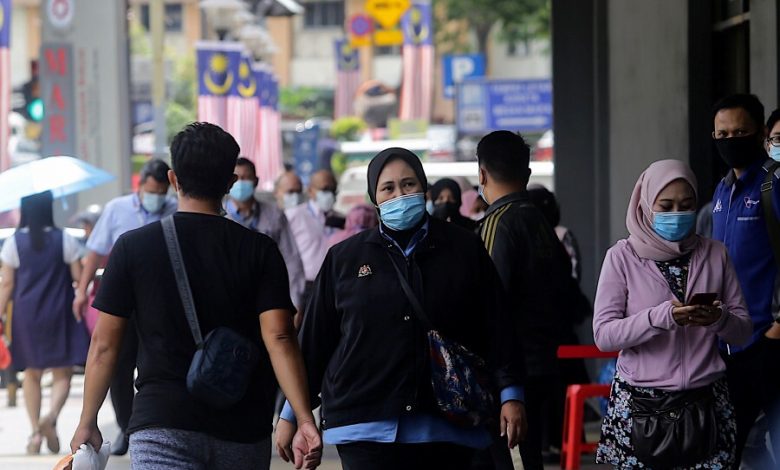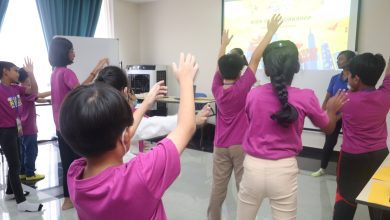

By Dato’ Dr Amar-Singh HSS, Senior Consultant Paediatrician
We are all in the long-haul stretch of the COVID-19 endless marathon and we see fatigue and hopelessness setting in as repeated movement control orders (MCOs) and tighter restrictions are imposed. We need to be science-based with our daily SOPs, rather than resort to harsh measures. Heftier fines, extended MCOs, increased public blaming are counterproductive and also harmful to the poor and those that have lost their livelihood. We have to walk this fine balance between harm from COVID-19 and destroying lives from tight SOPs that limit employment.
I would like to offer some evidence-based suggestions on the few key SOPs that work, or do not work, for members of the public. Our ‘mantra’ for COVID-19 prevention should be three things – masks, ventilation and prevention of crowding (physical distancing). These are the key measures and all SOPS should be focused around them. All these three relate to airborne transmission which is the primary mechanism for COVID-19 spread.
Temperature Scanning is of Little Value and should be Stopped
We are all used to the routine temperature checks required at all premises. Some of us have been cautious about their value in detecting individuals with possible COVID-19. Mekjavic and Tipton have written a detailed review of available data on the value of infrared thermographic screening for COVID-19. The key points from all the studies reviewed suggest that:
- A measurement of skin (forehead) temperature does not provide an accurate assessment of core body temperature that is raised in a fever.
- Not all who have COVID-19 have a fever, especially in early stages while still infectious. Therefore, a normal temperature check may provide false reassurance. We are aware that pre-symptomatic and currently asymptomatic individuals are important in COVID-19 transmissions.
- The reliability of infrared thermometers is an issue and may vary by as much as 2℃. One study comparing the forehead temperatures of 1,000 people with different infrared thermometers gave variable temperatures ranging from 31℃ to 35.6℃. Another study showed a >80% false negative (missed the fever) using infrared thermometers.
One of the authors of the review, Professor Mike Tipton said: “Using a surface temperature scanner to obtain a single surface temperature, usually the forehead, is an unreliable method to detect the fever associated with COVID-19.”
Hence infrared thermometers screening is inaccurate and provides false reassurance. In addition we have seen locations where you have to come very close to the device, often touching it, to get a reading (resulting in high risks). Queuing for a temperature check also slows movements and reduces physical distancing. It is best that we stop this activity (SOP).
Make All Sit-Down Food Locations Open-Air
Ventilation is key to reducing COVID-19 risk, especially in buildings. Here we are focusing on F&B (food and beverage) outlets. While takeaway food is a good option, we also need to get back to sit-down dining to enable some to make a living. Lipinski and colleagues have reviewed the data on ventilation strategies to reduce the risk of disease transmission in high occupancy buildings. The data is clear that ‘recirculating ventilation’ and systems that ‘move indoor air around’ produce turbulent air flows with stale air and hence are of high risk. What is preferred are ‘displacement ventilation systems’ that remove contaminated indoor air and supply fresh air from outside constantly. The US Centers for Disease Control and Prevention (CDC) have good guidance on improving ventilation in buildings and considerations for restaurants. The CDC suggests that restaurants prioritise outdoor dining with a good 2-meter spacing between tables. Small outdoor ‘bubbles’ for dining are not safe as they restrict airflow. Any indoor dining should significantly restrict patrons, have 2-meter spacing between groups and have displacement ventilation i.e. increasing fresh outdoor air by opening windows and doors, and placing fans by windows to exhaust room air to the outdoors and draw fresh air into the room (avoid positioning fans such that they cause contaminated air to flow directly from one person over to another).
Hence, all shops and restaurants should be open-air and non-air-conditioned. We can make this happen by allowing tables and chairs to be put on the five-foot-way and perhaps even the road (at night). Strictly limit indoor patrons, keep all doors and windows open and use fans judiciously as mentioned above. The current single entry into a shop, with tape to cordon off all other entries, may be harmful – we can still do handphone scanning for entry at multiple sites. Restaurant bathrooms remain a high risk location and should be avoided by patrons. Other useful tips include avoiding reusable menus or other items where surface spread may happen, enabling strict booking times and limited eating times to reduce crowding. Do not use straws for drinks as they pose a high contamination risk.
Some members of the public have expressed concern with the opening of Pasar Malam (night markets) but they are definitely a much safer place to eat than a shopping complex or closed air-conditioned restaurant.
Improve the Quality of your Mask and Mask-Fit
Despite the widespread usage of masks, we still have many issues with mask use, especially poor usage. In addition, there is a growing call for the general public to replace cloth masks with medical/surgical masks. There have been a number of good reviews looking at all the evidence for mask use, cloth mask effectiveness compared to medical/surgical masks, face shields, etc; they include work by Chu et al, Howard et al, Clapp et al, Edelstein & Ramakrishnan and The Royal Society & the British Academy.
The key points from all the studies reviewed support that:
- Masks are effective in reducing transmission of infected COVID-19 respiratory particles to others (both protect others and protect us).
- When compliance to mask-wearing by the public is high, spread of the virus is effectively reduced.
- Cloth masks are effective if made with multiple layers and hybrid construction (following World Health Organisation guidelines for three layers: outer layer of non-absorbent material, such as polyester or polyester blend; middle layer of non-woven non-absorbent material, such as polypropylene; inner layer of absorbent material, such as cotton). Cloth masks could provide 70-90% filtration efficiency with a good fit and aluminium nose bridge.
- An improper fit of a mask can result in a significant decrease in the filtration efficiency. This applies to both medical/surgical masks and cloth masks. Medical/surgical masks with ear loops are poor (38% filtration efficiency) compared to those with ties (72% efficiency).
The ‘Evaluation of Cloth Masks and Modified Procedure Masks as Personal Protective Equipment for the Public During the COVID-19 Pandemic’ by researchers from the US Centers for Disease Control and Prevention Epicenters Program (Clapp et al) stated as a conclusion: “While modifications to improve medical procedure mask fit can enhance filtering capability and reduce inhalation of airborne particles, this study demonstrates that the FFEs of consumer-grade masks (cloth masks) available to the public are, in many cases, nearly equivalent to or better than their non-N95 respirator medical mask counterparts.”
Hence, it is important that those wearing medical/surgical masks with ear loops work to improve the fit of those masks. The time has come to provide standard guidelines on commercial cloth mask manufacture as in a number of countries. It is better for us to use quality reusable cloth masks, rather than pollute the environment with single use medical/surgical masks (with the plastic in these masks, they can last 300-400 years). Finally, no amount of mask usage is of value if the nose is exposed or the mask placed on the chin.
Open Nature Parks and Jungle Trails to the Public
Outdoor activities are relatively safe (not contact sports), provided unrelated persons maintain some physical distancing. Nature parks and jungle trails are safe locations for the public to go to. The current restrictions on forest reserves and jungle trails works against the public, who require some outlets for recreation.
Not all areas are covered in this brief write up but I hope the data and evidence quoted here supports the improvements in our SOPs and works towards improved control of the pandemic locally.


